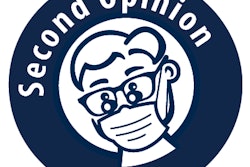
There have been very few times in the history of dentistry that a single innovation or technology has been the catalyst for radically changing the game. This is one of those times. The game-changer, however, isn't some sort of high-tech gadget. It's something as mundane as an insurance code.
But this is not just any insurance code. The recently issued Code on Dental Procedures and Nomenclature (CDT) 2017 introduces the new paradigm-shifting code D4346. This fills a huge gap in our exiting insurance codes and has the power to finally bring the medical relevance to gingivitis treatment, which presents a great opportunity. For those practices that are unprepared, it could bring chaos.
The inflammation link
 Patti DiGangi, RDH.
Patti DiGangi, RDH.Numerous studies have shown the critical role inflammation plays in the development of hypertension. Nearly every day, another study shows oral inflammation is related to atherosclerosis, myocardial infarction and stroke, diabetes, and neurodegenerative diseases such as rheumatoid arthritis, Alzheimer's disease, and others. In addition, aspiration of oral bacteria can cause pneumonia, especially in hospitalized patients and the elderly, and may influence the course of chronic obstructive pulmonary disease.
These diseases are not limited to a certain age. As reported in November 2016, a study found 99% of obese kids have inflamed gums. Gingival inflammation in children is not less serious than it is in adults or the elderly.
The good news is that this new code is not age-based like the D1110/D1120 prophylaxis codes.
Recognition and treatment of oral inflammation are paramount. This new code recognizes this in its name: D4346 scaling in presence of generalized moderate or severe gingival inflammation -- full mouth, after oral evaluation. In other words, this code provides the opportunity to identify this ubiquitous disease and treat it therapeutically.
Inflammation without bleeding on probing
Diagnosis of gingival inflammation isn't about pockets and calculus. Bleeding on probing can be a sign of inflammation, but not everyone with inflammation has it. This discrepancy is where clinical chaos can start.
“This code provides the opportunity to identify this ubiquitous disease and treat it therapeutically.”
Typically, we see puffy, red, bleeding gums, and ulcerated pocket walls with periodontal disease, but not in smokers. Many smokers experience bleeding gums after they quit. It has been thought for many years that smoking changes the vascularity of gingival tissues, but this has not been proved scientifically. The point here is that not all inflamed tissue shows bleeding on probing. In addition to localized evidence, other systemic factors must be considered.
Gingival inflammation has not been traditionally quantified. To use this code accurately, ways to measure inflammation are needed. Most periodontal charts do not have a specific place for this documentation. The best method for quantification is the use of photographic images. In addition, to qualify for this code, more than 30% of the teeth need to have moderate to severe inflammation.
The new code and current systems
One aspect that does need to be acknowledged, however, is that more complex patient health histories, technology, and other important steps in patient care continuously challenge the allotted time available for most schedules. Important steps are sacrificed to the altar of staying on time.
So now you are saying to yourself, "Here's this new code creating the need to do to more." The best option is to pull everything out of the clinical closet to see if each part is based on up-to-date science or tradition.
You might find it's amazing what we don't need to do that allows time for what is truly important. You may find items buried deeply in the back of the closet, such as the Löe and Silness Gingival Inflammation Index. Using this index to quantify inflammation can be amazingly helpful with this new code.
Part 2 of this series will walk you through case reports and discuss practical practice coding opportunities.
Patti DiGangi, RDH, is an international speaker and the author of the 2016 book A Gingivitis Code Finally! the fifth book in the DentalCodeology series. She also authored a chapter in CDT 2017 Companion. She can be reached at www.dentalcodeology.com or [email protected].
The comments and observations expressed herein do not necessarily reflect the opinions of DrBicuspid.com, nor should they be construed as an endorsement or admonishment of any particular idea, vendor, or organization.



















